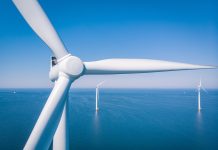When Simon Raab and Greg Fraser met some 30 years ago while working toward their doctorates in biomedical engineering at McGill University, they bonded immediately, referring to themselves as “techno-junkies.” Deciding to pool their collective energy, they launched Res-Tech in 1981, which was changed to FARO Technologies two years later when they began developing technology and software to support advanced surgical and diagnostic methods.
“In the early years they spent nearly as much time attending trade shows, visiting hospitals, and meeting with potential customers as they did working on new designs,” according to Gary Telling, the company’s director of product management and business development. “But that close relationship with the end users became a cornerstone of the company’s philosophy, leading to products and technologies that actually make sense in the real world, not just on paper or in concept.”
FARO introduced its first articulated-arm measurement device in 1984, also securing patents for several pieces of equipment used in neurosurgery in the following years. By the early nineties the two colleagues had realized that their measurement arm had applications beyond the surgical theater, and that it would be ideal for introducing a coordinate measurement machine (CMM) into the manufacturing environment.
“While there were measurement machines available at that time, they weren’t portable and were housed in labs that were separate from where the manufacturing was actually taking place,” according to Pete Edmonds, vice president of sales. “What was needed was a three-dimensional CMM that could be introduced into the production line to provide in-process measurements, rather than waiting to do so once the part was finished. The hardware had to be flexible and durable, and the software intuitive and simple to use.”
With many of the company’s medical patents having been sold to Medtronics, entering the industrial arena became FARO’s primary activity for the next few years, leading to expansion into the European market in 1996 and an IPO the following year. A particular milestone was reached with the acquisition of CATS, a software design company, in 1998. “From a strategic standpoint this allowed FARO to concentrate on equipment while CATS focused on software development,” Telling says. “This resulted in a package that allowed manufacturers to make measurements in real time and compare them to the original CAD drawings, detecting problems earlier in the process, which led to significant savings in terms of fewer scrapped parts.”
The years since have seen the advent of a suite of products in addition to the FaroArm including the FARO Gage portable CMM—as well as the GagePlus and PowerGage—the Laser ScanArm and Scanner, the Laser Tracker ION, and the 3D Imager. The company also offers its well-known CAM2 measurement and reporting software, for CMM-to-CAD comparisons. Apart from measuring virtually any type of component or part, Edmonds says his wind customers have found additional uses.
“I have one who’s a blade manufacturer, and he actually uses the Laser Scanner to measure the interior of these 80-meter blades in order to fabricate the foam core that goes inside, and it’s also perfect for measuring long sections like towers and the big parts that are used in wind turbines,” he says. “And the 3D Imager can be used to digitize blade surface profiles. So whether it comes to inspecting the molds for hub covers or checking individual parts during manufacture, we’re well-positioned to provide our customers with the exact type of measuring technology they require in support of their total quality management program.”
These days FARO is involved in a wide variety of industries—aerospace, automotive, heavy equipment, machine tools, metal fabrication, mining, medical systems, architecture, and civil engineering, just to name a few—with offices throughout the United States, Europe, and Asia. That its technologies have become industry standards are made evident by the caliber of its customers, which include Boeing, Airbus, General Motos, Johnson Controls, Caterpillar, and Honda. Fueling this growth is the same sense of curiosity and innovation that brought the company into being in the first place.
“I can definitely say that the entrepreneurial spirit that Greg and Simon brought to this enterprise continue to guide our efforts to this day,” Telling says. “Innovation is part of our DNA, in fact.”
To learn more:
Call (514) 522-6329, e-mail sales@phwindsolutions.com, or go to www.phwindsolutions.com.



























